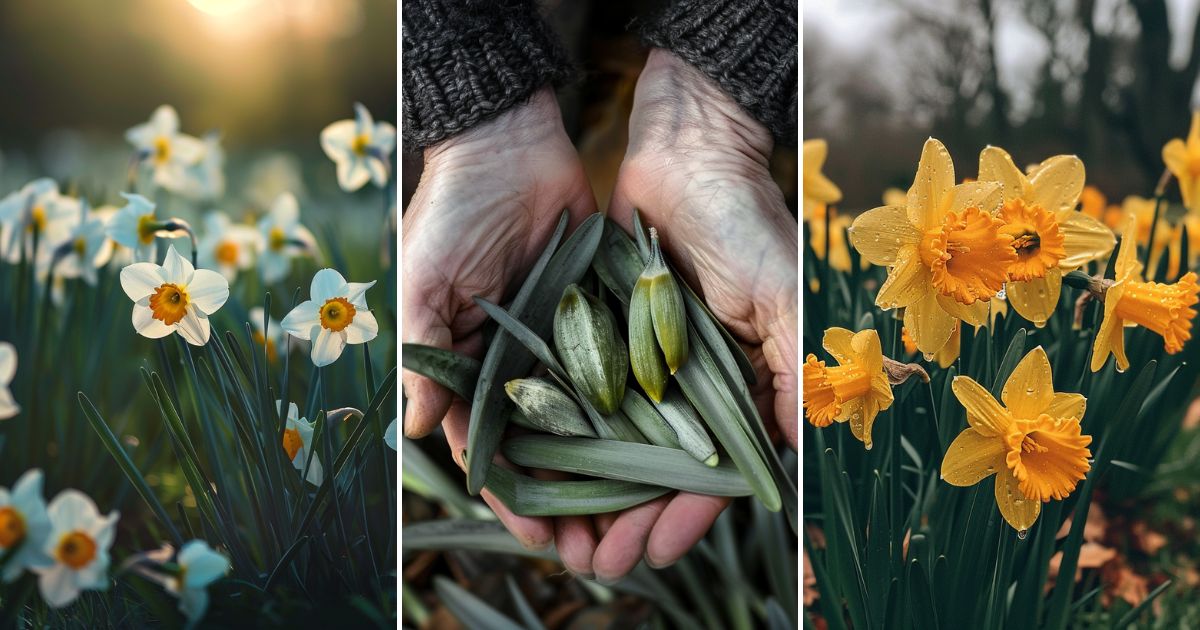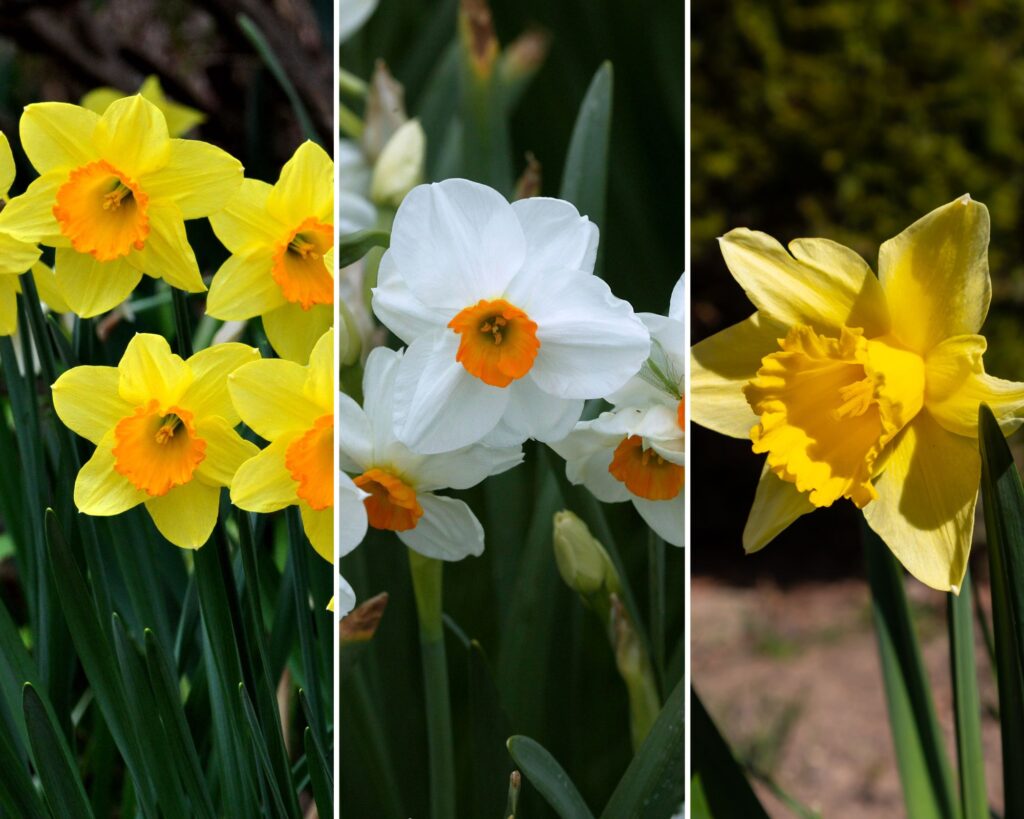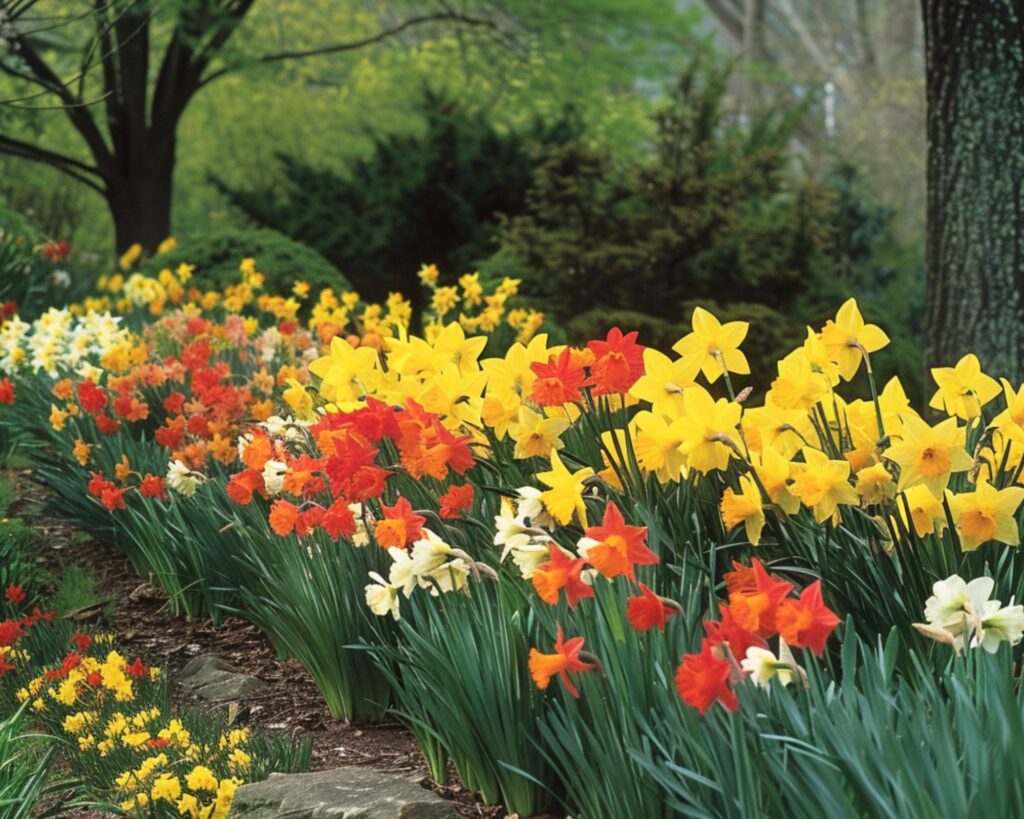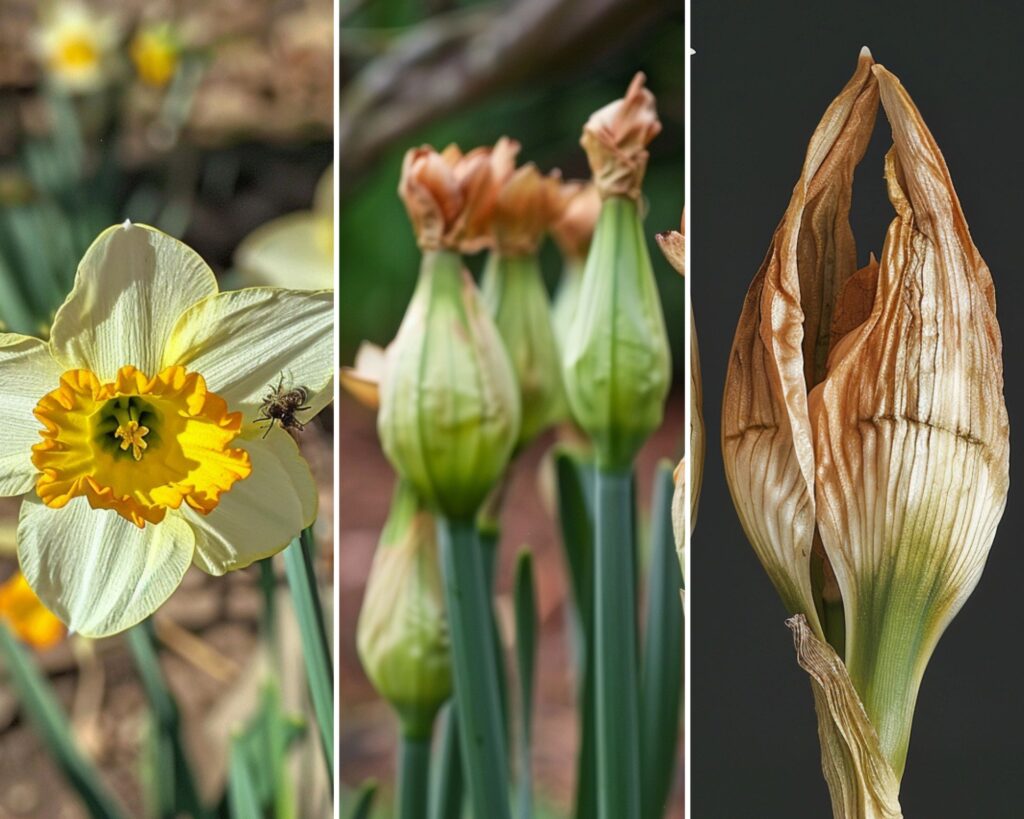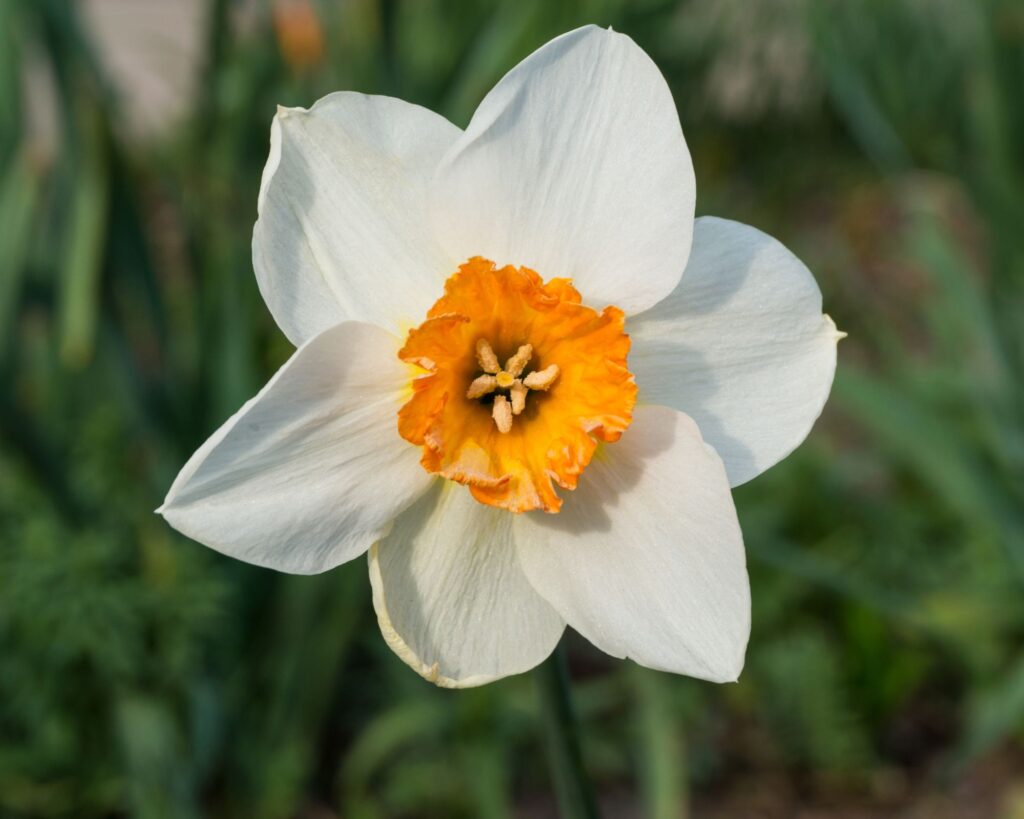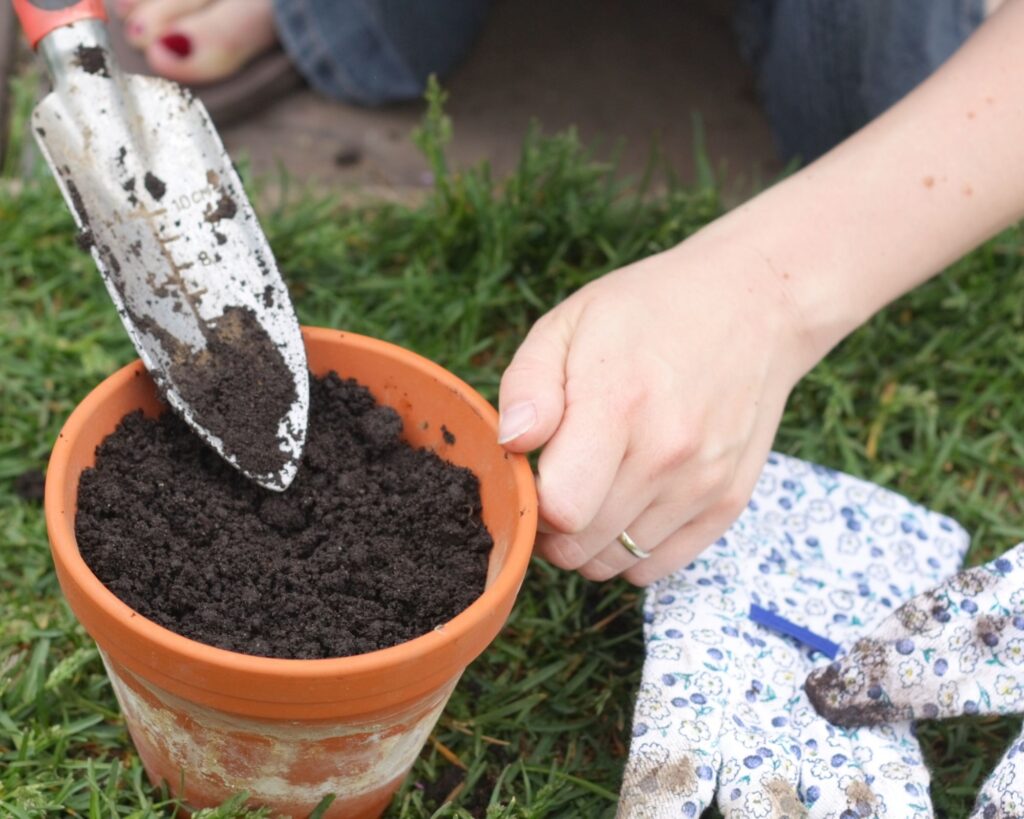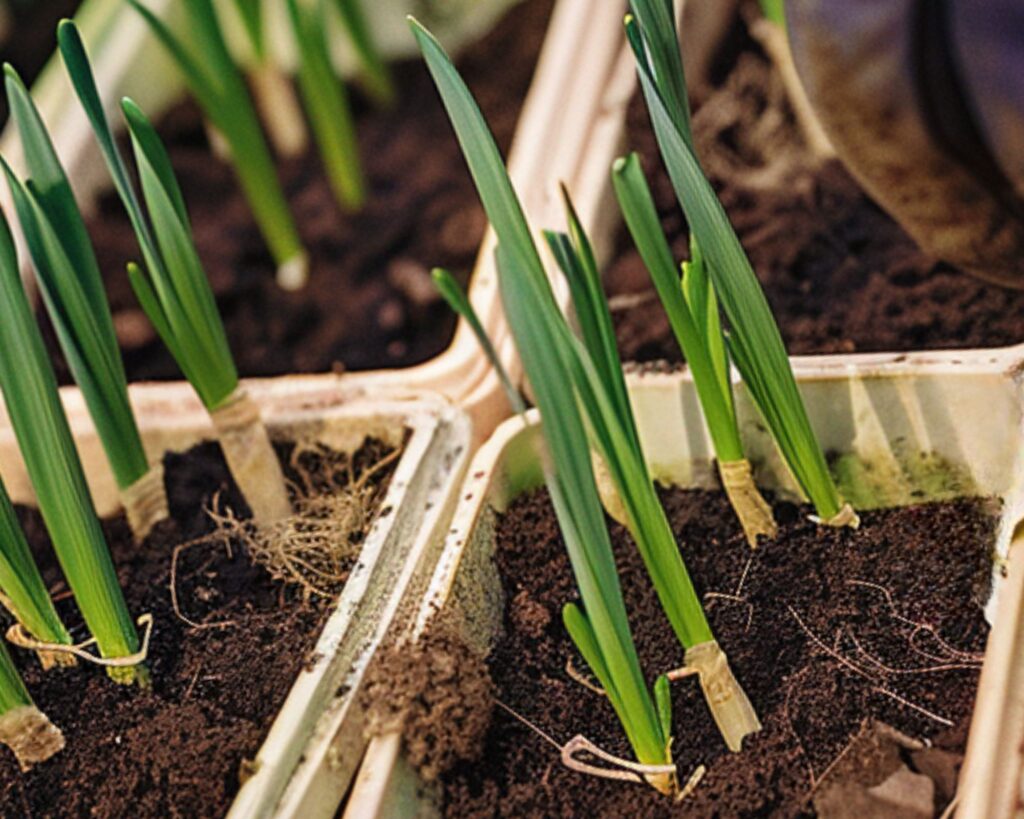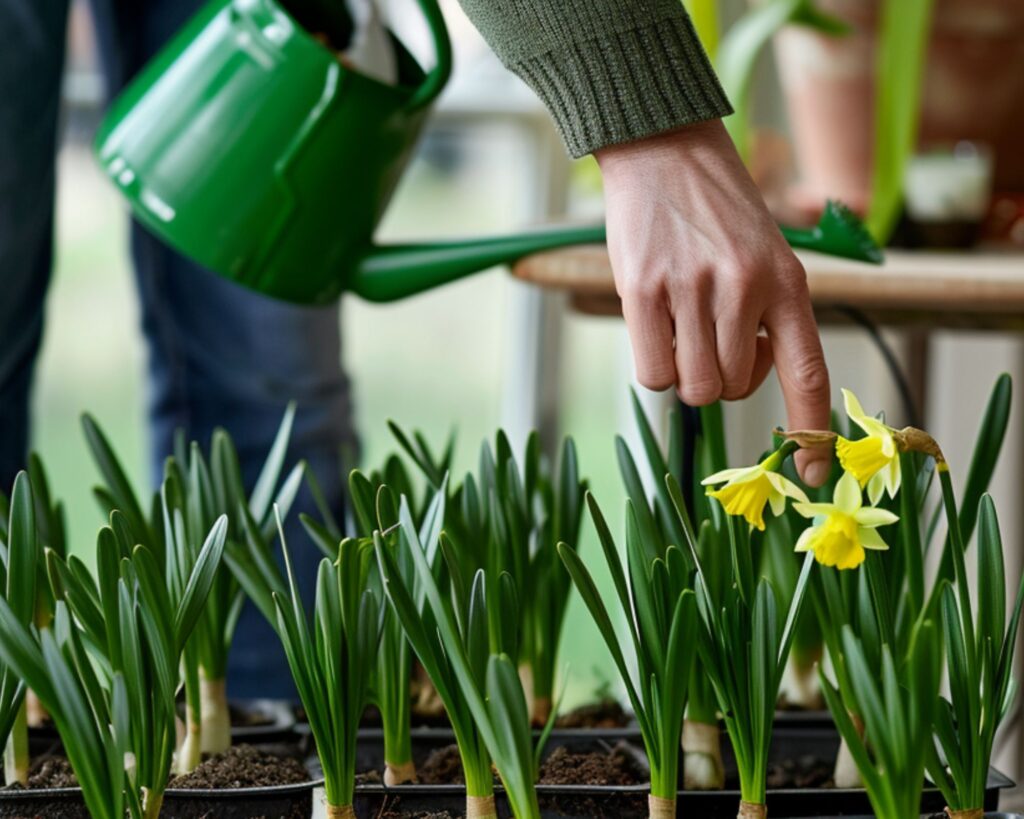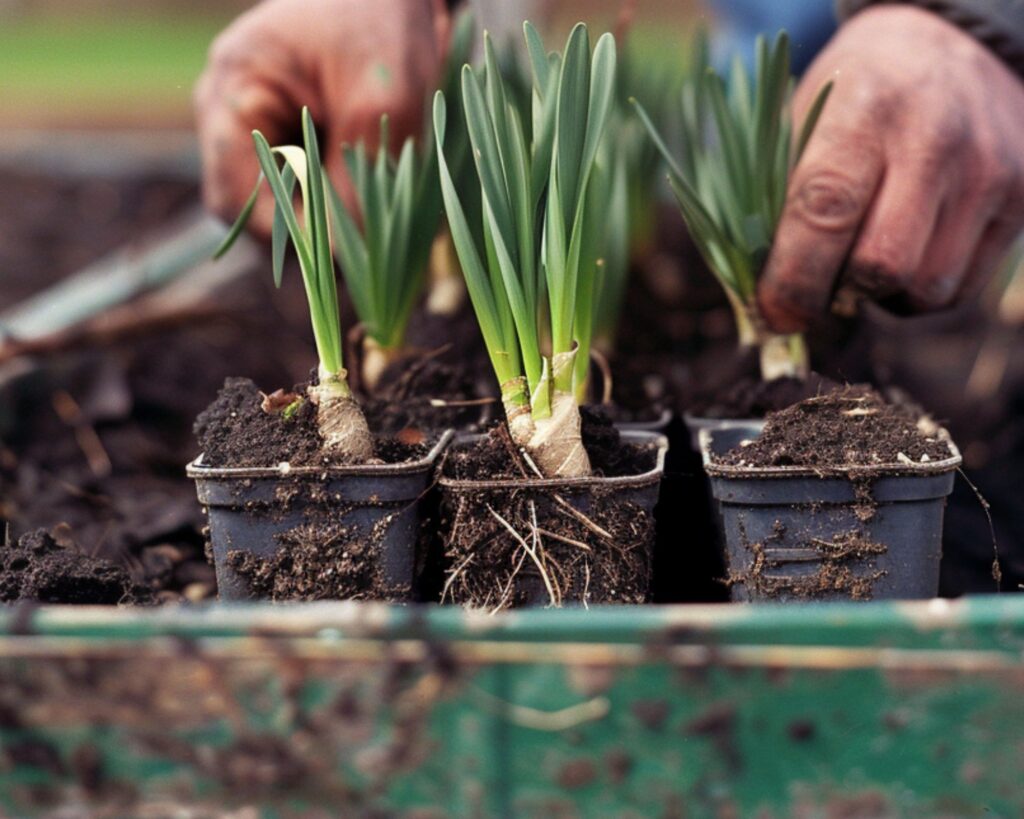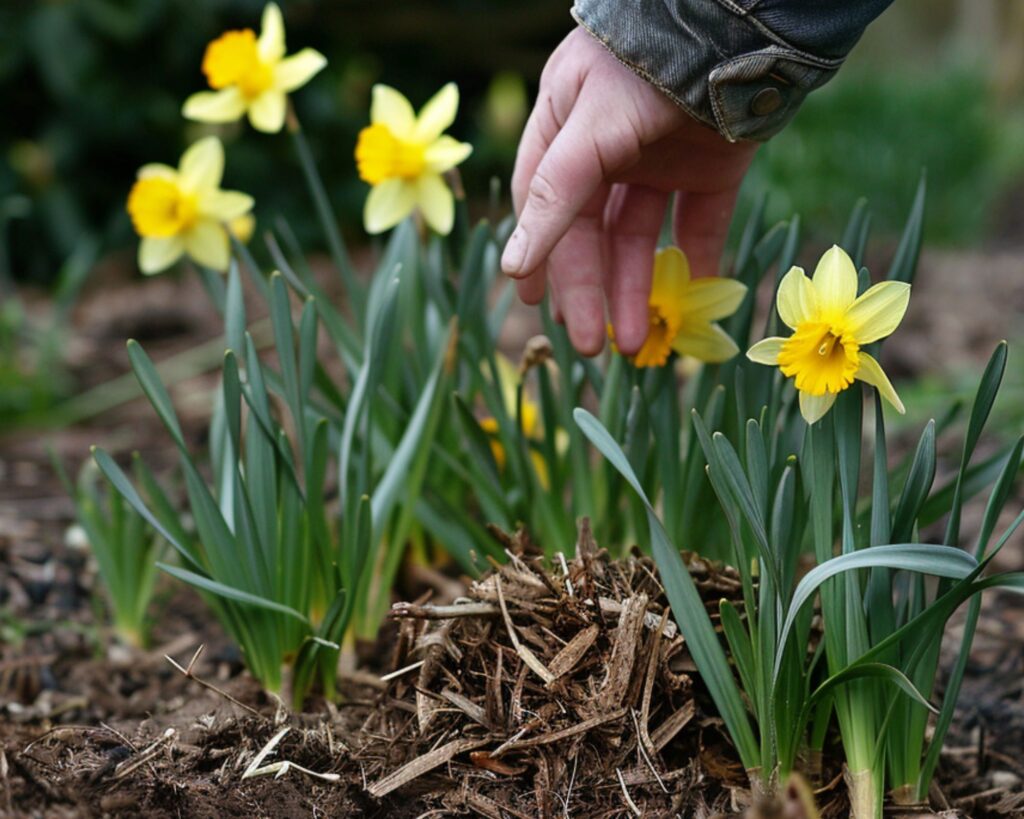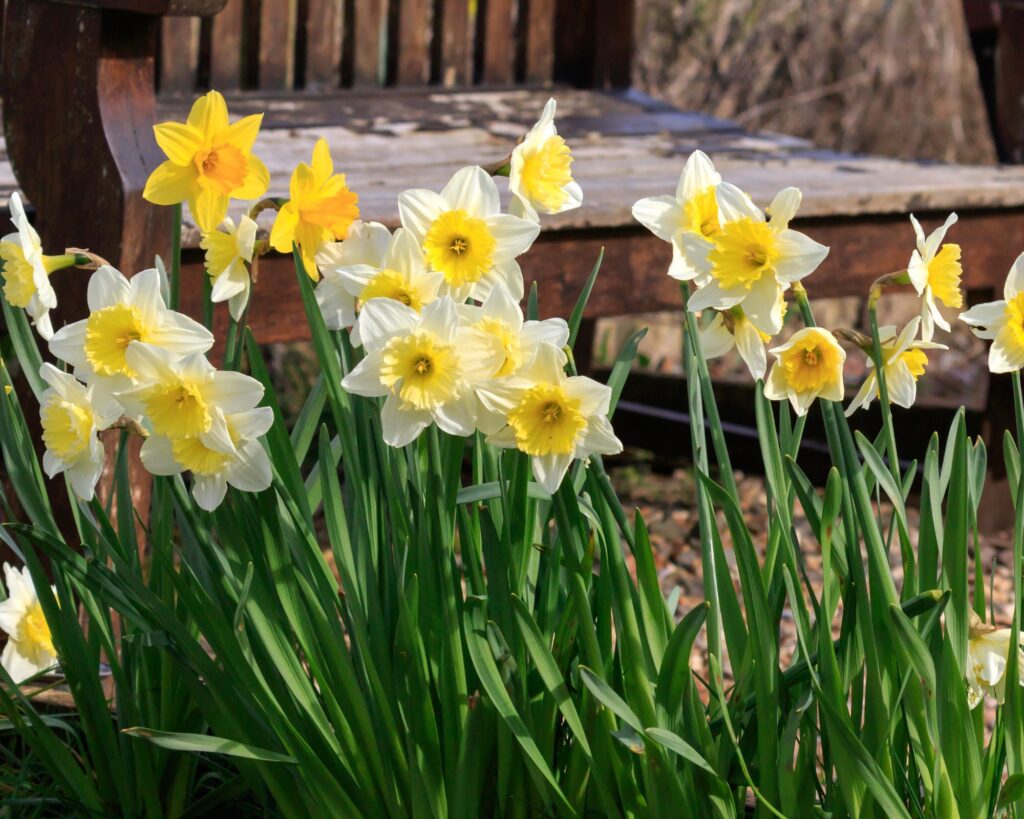Ready to embark on an extraordinary gardening adventure? Growing daffodils from seed isn’t just about planting flowers; it’s about creating something truly unique and watching it flourish.
This guide will walk you through every stage of this fascinating process, making it easy and enjoyable for gardeners of all levels.
Get ready to transform your garden into a dazzling display of nature’s beauty!
Collecting Daffodil Seeds
Collecting daffodil seeds requires patience and a keen eye. You’ll learn how to identify seed pods and properly store the seeds for successful planting. Each stage has its charm and provides a deeper connection to your garden.
Identifying Seed Pods
After the daffodils bloom, look for the development of seed pods. These pods form after the flowers have been pollinated and the petals have withered away.
The seed pods will initially be green and swollen, growing larger as the seeds develop inside.
Harvesting and Storing Seeds
Once the seed pods turn brown and start to crack open, it’s time to harvest the seeds. Carefully remove the pods from the plant and open them to collect the seeds. Allow the seeds to air dry for a few days to prevent mold growth.
Store them in a cool, dry place in paper envelopes or small containers until you’re ready to plant.
Species Diversity and Beauty
Daffodils captivate gardeners and flower enthusiasts with their vast species diversity and incredible resilience. These qualities make them a delightful addition to any garden.
There are over 50 species of daffodils, each offering unique shapes, sizes, and colors. You can find varieties ranging from the classic yellow trumpet to white-petaled beauties with orange or pink centers.
Their blooms can be large and showy or small and delicate.
List of Popular Varieties:
- Narcissus pseudonarcissus (wild daffodil)
- Narcissus poeticus (poet’s daffodil)
- Narcissus jonquilla (jonquil).
These variations allow you to create a visually stunning garden. Whether you prefer a uniform look or a more eclectic mix, daffodils provide the flexibility to design your ideal floral display.
Longevity and Resilience
Daffodils are known for their remarkable longevity and resilience. Once established, they can bloom for decades with minimal care, returning year after year to herald the arrival of spring.
This makes them an ideal choice for busy gardeners who still want a vibrant landscape.
Key Features of Daffodil Resilience:
- Natural pest resistance
- Ability to thrive in various soil types
- Tolerance to different weather conditions.
By planting daffodils, you’re investing in flowers that will bring beauty and joy to your garden for many years without requiring much upkeep.
Their hardy nature ensures that even novice gardeners can enjoy their brilliance season after season.
Understanding Daffodil Seed Basics
To grow daffodils from seed, it’s vital to grasp how daffodil seeds develop and the conditions required for their successful maturation.
Seed Development and Lifecycle
Daffodils start with pollination, where pollen from one flower fertilizes another. This fertilized ovule becomes the seed. Each seed contains the genetic material to produce a new plant. After fertilization, the seed pod forms.
These seed pods will mature over several weeks. Initially, they are green but turn brown as they dry out. When fully dry, they split open, revealing the seeds inside. Each pod can contain multiple seeds.
Collecting these seeds is the first step toward growing new daffodils.
Optimal Conditions for Seed Maturation
For daffodil seeds to mature properly, they require specific conditions. Sunny, warm weather is essential during the maturation period. Ensure the plant receives plenty of sunlight and is not waterlogged.
Good air circulation helps prevent mold, which can damage seeds.
Maintaining the right soil moisture is crucial. Water sparingly once the seed pods start to dry. Overwatering can cause the pods to rot. Collect the seeds once the pods have dried and split open naturally. Store them in a cool, dry place until you’re ready to plant.
Cultivating Daffodil Seeds
Starting daffodils from seeds requires understanding the ideal germination environment and mastering the correct seed sowing techniques. With patience and care, you can enjoy a beautiful daffodil bloom.
Germination Environment
Daffodil seeds need specific conditions to thrive. Aim for a cool, moist environment. Temperatures around 40°F (4°C) are ideal during initial germination. You might consider stratifying seeds by refrigerating them for 6-8 weeks to mimic winter conditions.
Potting soil should be well-draining yet retain moisture. Adding perlite or sand can help with drainage. Light is not essential initially; darkness can suffice until sprouts emerge. Ensure your soil remains damp but not waterlogged to prevent rotting.
Seed Sowing Methodology
Prepare your pots or trays with the appropriate soil mixture. Sow seeds about 1/4 inch deep and cover lightly with soil. Spacing seeds an inch apart helps to avoid overcrowding. Label your containers with the sowing date for reference.
After sowing, place containers in a cool area. Regularly check soil moisture. Avoid direct sunlight initially. Sprouts may take several weeks to months to appear, so patience is key.
Once seedlings are visible, provide indirect sunlight and maintain consistent moisture.
Caring for Seedlings and Transplanting
Once your daffodil seeds have sprouted, they require specific care to thrive. You will need to understand their growth stages and know the right timing and techniques for transplanting.
Growth Stages and Care Tips
During the initial stages, your daffodil seedlings will need bright, indirect light and consistent moisture. Avoid letting the soil dry out, but ensure it drains well to prevent waterlogging.
As the seedlings develop, thin them out to avoid overcrowding. Remove weaker seedlings to give stronger ones more room to grow.
Provide a balanced, water-soluble fertilizer every two weeks to support healthy growth. Make sure to follow the recommended dosage on the fertilizer packaging to avoid any nutrient burn.
When and How to Transplant
Transplant your daffodil seedlings when they have at least two sets of true leaves and the roots have filled their current container. This usually happens 8-10 weeks after germination.
Prepare a well-draining soil mix in the new location or container. Dig holes deep enough to accommodate the root system without bending or damaging the roots.
Gently remove the seedlings from their original container. Place them in the hole, fill in with soil, and water thoroughly. Maintain consistent moisture after transplanting to help the plants establish in their new space.
Advanced Tips for Growing Daffodils from Seed
Soil Preparation
The success of your daffodil seedlings depends significantly on the soil conditions. Daffodils prefer a slightly acidic to neutral pH soil (6.0-7.0). Before transplanting, test your soil pH and amend it if necessary.
Incorporate organic matter such as compost to enhance soil fertility and structure.
Mulching
Mulching around your daffodil plants helps retain soil moisture, suppress weeds, and regulate soil temperature. Use organic mulch such as straw, shredded bark, or compost.
Apply a 2-3 inch layer of mulch around the base of the plants, avoiding direct contact with the stems.
Pest and Disease Management
While daffodils are relatively pest-resistant, they can still fall victim to certain issues. Common pests include bulb flies, slugs, and snails.
Use organic pest control methods such as introducing beneficial insects, using copper tape to deter slugs, or applying diatomaceous earth around the plants.
Diseases such as basal rot and botrytis can affect daffodils. Ensure good air circulation, avoid overhead watering, and remove any diseased plant material promptly. Planting daffodils in well-drained soil helps prevent fungal diseases.
Growing daffodils from seed is a fulfilling journey that allows you to create a unique and personalized garden.
By understanding the nuances of daffodil seed development, germination, and transplantation, you can nurture these resilient and beautiful flowers, ensuring they become a lasting part of your garden’s springtime charm.
Embrace the patience and dedication required, and you’ll be rewarded with a vibrant display of daffodils that reflect your gardening passion and effort.
